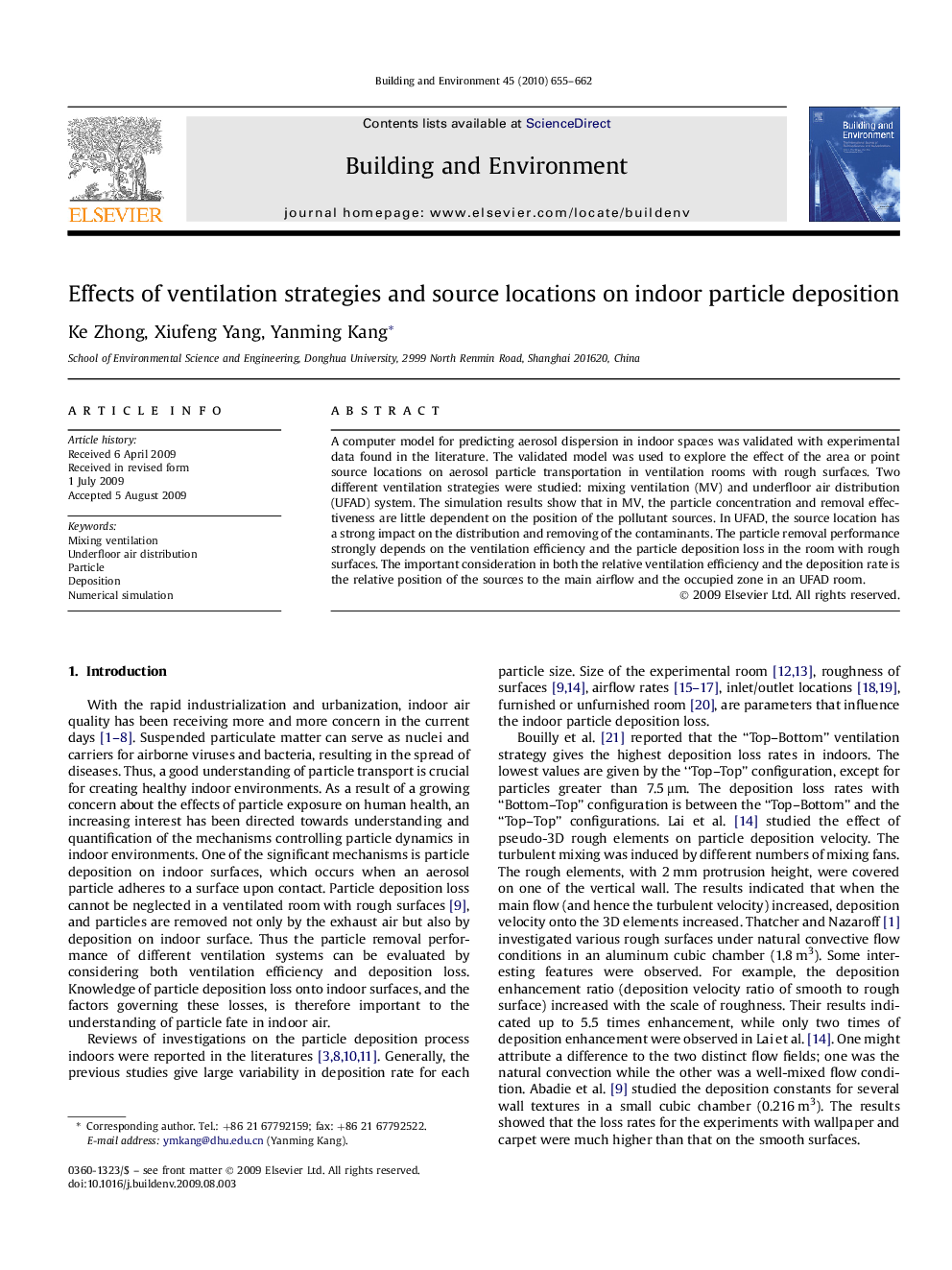| Article ID | Journal | Published Year | Pages | File Type |
|---|---|---|---|---|
| 249395 | Building and Environment | 2010 | 8 Pages |
A computer model for predicting aerosol dispersion in indoor spaces was validated with experimental data found in the literature. The validated model was used to explore the effect of the area or point source locations on aerosol particle transportation in ventilation rooms with rough surfaces. Two different ventilation strategies were studied: mixing ventilation (MV) and underfloor air distribution (UFAD) system. The simulation results show that in MV, the particle concentration and removal effectiveness are little dependent on the position of the pollutant sources. In UFAD, the source location has a strong impact on the distribution and removing of the contaminants. The particle removal performance strongly depends on the ventilation efficiency and the particle deposition loss in the room with rough surfaces. The important consideration in both the relative ventilation efficiency and the deposition rate is the relative position of the sources to the main airflow and the occupied zone in an UFAD room.
